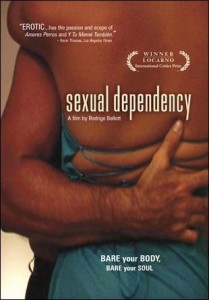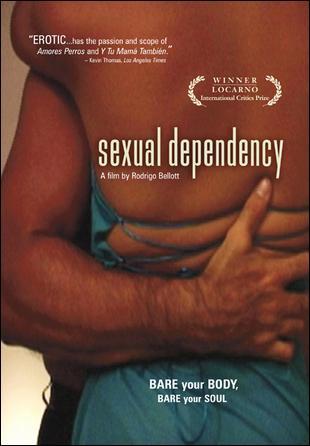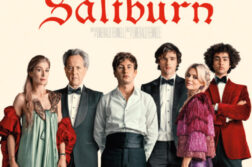 Sexual Dependency (Dependencia Sexual)
Sexual Dependency (Dependencia Sexual)
Written by Rodrigo Bellott
and Lenell N. Moise
Directed by Rodrigo Bellott
DVD Distributed by Wellspring
SEX IS RARELY DISCUSSED in Bolivia because of the country’s extremely macho Roman Catholic culture, and sexual minorities have a history of being viewed as undesirables who live outside of society’s moral code. But perhaps this part of Bolivia’s homophobic culture is beginning to change, due in small part, perhaps, to director Rodrigo Bellott’s success with his Bolivian-American film, Sexual Dependency. After a very successful run in the film festival circuit in the U.S. and abroad, the film has now been released on DVD by Wellspring.
In May of 2001, Bellott began an artistic experiment when he developed an Abercrombie and Fitch-style advertising campaign for a bogus multinational underwear company called rigo bosd. That mythical corporation symbolized all of the worldwide conglomerates that manipulate and regulate people culturally, socially, and sexually in the pursuit of greater profits. Then a funny thing happened. Bellott expanded his experiment by constructing a ten-by-four-meter billboard in the middle of downtown Santa Cruz. He planned to use the outdoor advertisement as a backdrop for his film. But within a month of its assembly, the accompanying website to the rigo bosd ad became one of the most visited websites in upstate New York, and Bolivian manufacturers of American clothing companies began inquiring about the manufacturing rights to the fake brand.


The billboard is the film’s predominant symbol and a connecting fiber in the five loosely-related stories it recounts. Transgender prostitutes congregate under the rigo bosd billboard to ply their trade. The first sequence, “My Baby Is a Woman Now,” is about a girl who loses her virginity at a friend’s quinceanera, a debutante party for fifteen-year-olds. Next, “You Damn Whore” follows an innocent boy’s first-time visit to a prostitute. “The Bluest Eyes” zeroes in on the insecurities of an overprotected, anger-ridden young man on the eve of moving to the U.S. to attend college.
Two stories, “Mirrors” and “Angels and Billboards,” are set in the U.S. “Mirrors” is narrated as the monologue of a lesbian activist telling the story of her rape, and “Angels and Billboards” is about a collegiate football player and part-time rigo bosd male model who hides his sexual identity even to the point of becoming involved in a gang rape.
Bellott has employed an ambitious split-screen technique to interconnect the five stories. This device allows the director to go back and forth in time as he weaves the tales together. The film’s documentary-like style is achieved in part through the use of non-professional actors. Bellott has disclosed that he interviewed approximately 700 “real teenagers” in Bolivia, and another 500 in New York, when casting the movie.
The film contains more than a passing nod to photographer Nan Goldin’s photographic essay, Sexual Dependency, from which it draws its title. Goldin is credited with having spearheaded the “snapshot æsthetic” of the 1980’s. Like Goldin’s work, Bellott’s Sexual Dependency trains its lens on issues of gender, power, and dependency. Hailed as the beginning of a new Bolivian cinema, Sexual Dependency was the Bolivian government’s official submission for last year’s Academy Award in the Foreign Language Film category, and it won the 2003 Locarno Film Festival’s Fipresci Jury Award for “its courageous examination of machismo.”






